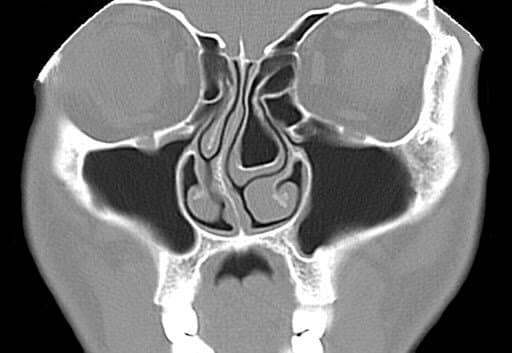Seasonal Sinusitis and Climate Change: Impact on Allergies and Sinus Health
As seasonal allergies seem to worsen for many, a common question arises: is climate change making my sinus symptoms more severe? Increasing evidence suggests a correlation, but individual experiences may vary. The effects of a warming planet—including longer pollen seasons, worsening air pollution, and more extreme weather events—combine to make the impact of climate change on seasonal sinusitis a growing health concern. If your stuffy nose, headaches, or sinus infections feel more persistent each year, environmental changes may be a significant contributing factor.
In this post, we’ll explore how climate change influences seasonal sinus issues, highlight emerging triggers to watch for, and share practical strategies to help you manage symptoms effectively in this evolving environment.
Understanding Seasonal Sinusitis
Seasonal sinusitis refers to inflammation of the sinuses that often coincides with specific times of the year, notably during peak allergy seasons such as spring and fall. It is characterized by symptoms like nasal congestion, facial pressure, headaches, postnasal drip, and sometimes secondary infections. These infections may occur due to swelling and blockage of sinus drainage pathways but can also arise from viral or bacterial causes not directly related to allergies.
This condition typically results from allergic reactions triggered by substances such as pollen, mold spores, or grass. However, viral infections and other factors may also contribute to seasonal sinus symptoms. These allergens inflame the delicate lining of the nose and sinuses, leading to discomfort and increased susceptibility to infection.
Primary triggers include:
- Tree pollen in early spring
- Grass pollen in late spring and summer
- Weed pollen during fall
- Mold spores, especially in humid environments
- Airborne pollutants such as PM2.5 and other irritants that worsen inflammation
Symptoms often improve as allergy seasons wane, but for many individuals, seasonal sinusitis is becoming more frequent, more intense, and sometimes even year-round due to environmental changes that prolong allergen exposure. Recognizing these triggers can help in timely symptom management.
Climate Change: A Growing Concern for Sinus Health
Research indicates that climate change contributes to respiratory and sinus conditions. Studies show that rising global temperatures, longer warm seasons, and deteriorating air quality are associated with more intense and persistent allergy seasons. This article aims to clarify these connections to help underscore why maintaining sinus health is increasingly important.
Climate Change and Allergies
The Connection Between Climate Change and Allergies
The traditional concept of a clearly defined “allergy season” is changing. Climate change fuels longer and often more severe allergy periods through several mechanisms.
Rising Temperatures and Extended Pollen Seasons
Warmer temperatures cause plants to bloom earlier and produce pollen for longer durations. Research from various regions indicates pollen seasons have lengthened by as much as three weeks over recent decades.[1][2] For example, oak trees in the eastern United States can begin pollinating up to two weeks earlier than 30 years ago, while ragweed pollen season in some Midwestern states now extends well into November. This extended exposure increases the likelihood and severity of sinus symptoms such as congestion, headaches, and facial pain. Longer pollen seasons mean more opportunities for sinus inflammation.
Increased Pollen Potency and Allergen Exposure
It’s not only the amount of pollen that matters—research suggests that pollen may be becoming more potent. Air pollution, especially in urban areas, interacts with pollen grains and can damage their outer surfaces, which enhances their allergenic properties.[1][3] For instance, diesel exhaust particles attach to pollen, altering its structure and increasing allergenicity.
Moreover, extreme weather events linked to climate change, like thunderstorms, can rupture pollen grains into smaller particles that penetrate deeper into nasal passages and lungs. While this phenomenon is primarily linked to “thunderstorm asthma” — a sudden, severe lower respiratory event — fragmented pollen can exacerbate upper respiratory allergies too.[3] It is important to note that thunderstorm asthma primarily affects the lower airways and differs from sinusitis.
How Air Quality and Pollutants Affect Allergens
Increased levels of fine particulate matter (PM2.5) from vehicle emissions, industrial activity, and wildfires also worsen sinusitis symptoms by irritating nasal mucosa and amplifying inflammation. Studies confirm that higher ambient temperatures correlate with elevated PM2.5 concentrations, intensifying sinonasal symptoms like swelling and congestion.[1] Urban residents frequently report worse sinus flare-ups during hot summer months when pollution peaks. Reducing exposure to pollutants can lessen inflammation.
Impact on Sinus Health
Environmental Factors Worsening Sinusitis Symptoms
The combined effects of seasonal sinusitis and climate change result in prolonged sinus inflammation with fewer recovery periods. Increased humidity from warmer climates encourages growth of mold and dust mites—two key sinus irritants—while potent airborne allergens persist longer, keeping the nasal lining continually irritated.
Airborne pollutants not only escalate immune responses to allergens but can also directly damage sinus tissue. This leads to swelling, mucus accumulation, and higher infection risk.
Longer Allergy Seasons Leading to Chronic Sinus Issues
Repeated or continuous inflammation due to prolonged allergen exposure can cause seasonal sinusitis to progress into chronic sinusitis. Chronic sinusitis is a medical diagnosis typically reserved for symptoms lasting more than 12 weeks. In this state, the mucosa—the delicate lining of the nose and sinuses—may remain inflamed for extended periods, impeding normal healing. This increases the likelihood of recurrent infections, persistent symptoms, and, in some cases, structural changes requiring medical or surgical care.
Dr. Janet Collins, an ENT specialist in Atlanta, observes, “We’re seeing more patients struggling with sinus issues outside traditional allergy months. Climate change is shifting respiratory health patterns, demanding long-term management approaches.” Early recognition and sustained care are vital.
Air Quality Concerns and Respiratory Health
Poor air quality is now recognized as a major factor aggravating allergies and sinus flare-ups. Fine pollutant particles irritate even healthy sinuses, and allergic individuals are especially susceptible.[1] Urban dwellers commonly experience earlier onset and longer duration of seasonal sinusitis compared to rural populations. The rising frequency of thunderstorm asthma events further demonstrates the complex interplay between air pollutants, weather, and respiratory conditions.[3] Monitoring air quality is crucial for managing sinus health.
Managing Seasonal Sinusitis in a Changing Climate
Despite these challenges, managing seasonal sinusitis in the context of climate change is achievable with informed strategies and appropriate care.
Recognizing Symptoms Early for Better Management
Being aware of key sinusitis symptoms—nasal congestion, facial pressure or pain, headaches, and postnasal drip—is essential. Climate change can contribute to longer and more intense symptom episodes. If your symptoms last more than 10 days, or if you experience fever, vision changes, or difficulty breathing (seek immediate medical care if breathing difficulties occur), consult an ENT specialist or allergist promptly to identify complications or infections requiring specialized treatment. Timely evaluation can prevent progression.
Effective Treatments and Relief Strategies
Medication Options
Over-the-counter medications such as antihistamines, decongestants, and nasal corticosteroid sprays remain effective for reducing inflammation and swelling. For allergy-driven sinusitis, immunotherapy—including allergy drops or allergy shots—can offer long-term relief by gradually desensitizing the immune response. Patients should weigh the benefits and risks of these options; our guide on Allergy Drops vs Allergy Shots provides detailed information.
Lifestyle and Home Remedies
Simple home interventions can significantly ease sinus discomfort:
- Use HEPA air purifiers and humidifiers to improve indoor air quality during high pollen or pollution days.
- Wash pollen off skin and hair immediately after outdoor exposure to limit allergen transfer inside.
- Perform regular nasal rinses or use saline sprays to clear allergens and reduce nasal irritation.
- Avoid triggers such as strong fragrances, cleaning chemicals, and smoke by following tips to avoid irritants that trigger sinus flare-ups.
These steps can help reduce inflammation and improve comfort.
Preventative Measures for Changing Climates
Proactive action is key:
- Monitor local pollen forecasts via resources like the Georgia Pollen Tracker to plan outdoor activities and minimize exposure.
- Stay indoors, limit outdoor exercise, or wear masks on days with high pollen counts or poor air quality.
- Implement home proofing measures—seal windows, use quality air filters, and control indoor humidity to reduce mold and dust mites.
Preparedness helps reduce sinus flare-ups even as climates shift.
FAQs About Seasonal Sinusitis and Climate Change
How does climate change specifically worsen sinusitis?
Climate change leads to longer pollen seasons, stronger allergens, increased humidity, and deteriorating air quality. These factors increase or prolong nasal and sinus tissue exposure to inflammation-inducing substances, resulting in more frequent, severe, or chronic sinusitis.[1][2] Climate shifts contribute to a challenging sinus environment.
Are allergies getting worse due to climate change?
Yes. Studies indicate allergies are worsening and lasting longer due to earlier blooming, extended pollen production, and heightened allergen potency—all associated with a warming climate.[1][2] Allergy seasons are evolving with the climate.
What steps can I take to reduce my sinus symptoms during allergy season?
Effective strategies include monitoring allergen forecasts; using indoor HEPA air purifiers; maintaining clean living spaces; frequent nasal rinsing; and utilizing medical therapies such as antihistamines or immunotherapy. For detailed tips, see Best Air Purifiers for Sinus Sufferers and Home Proofing Against Allergens. Proactive care eases symptoms.
When should I seek medical care for seasonal sinusitis?
If symptoms persist beyond 10 days, worsen, cause fever, vision changes, or interfere with daily activities, consultation is important. Difficulty breathing warrants immediate medical attention. Contact your healthcare provider or Sleep and Sinus Centers of Georgia for assessment and treatment. Early intervention is critical.
Can surgery help with chronic sinus issues caused by allergies?
In some persistent cases where medical management is insufficient, surgical procedures can enhance sinus drainage and relieve chronic symptoms. Learn more about Chronic Sinusitis Treatment available at Sleep and Sinus Centers of Georgia. Surgery is an option after thorough evaluation.
The Vital Link Between Climate Change and Sinus Health
It is clear that the effects of climate change and seasonal sinusitis are closely intertwined. Environmental shifts extend allergy seasons, increase allergen potency, worsen air pollution, and contribute to persistent symptoms complicating sinus health. Understanding these connections empowers you to adapt and protect your respiratory well-being.
Taking Action: Managing Sinusitis Year-Round in a Changing Environment
By monitoring your symptoms, staying informed about environmental triggers, and partnering with specialists at Sleep and Sinus Centers of Georgia, you can successfully navigate even the most challenging allergy seasons. Don’t let seasonal sinusitis limit your quality of life. Take proactive steps through lifestyle changes, medical therapies, and home modifications—and breathe easier regardless of climate changes.
If you’re struggling with persistent or worsening sinus symptoms, book an appointment with a specialist today to receive personalized care tailored for this new era of respiratory health.
Disclaimer: This article is for educational purposes only and is not medical advice. Please consult a qualified healthcare provider for diagnosis and treatment.
References
[1] International Forum of Allergy & Rhinology (2023); Johns Hopkins Medicine Review (2023); Nature Communications (2022): Clinicians Review
[2] Centers for Disease Control and Prevention (2019); AAMC: Do Seasonal Allergies Seem To Be Getting Worse? Blame Climate Change
[3] BBC Future Article (2025): How climate-driven thunderstorms supercharge pollen allergies
Don’t let allergies slow you down. Schedule a comprehensive ENT and allergy evaluation at Sleep and Sinus Centers of Georgia. We’re here to find your triggers and guide you toward lasting relief.





